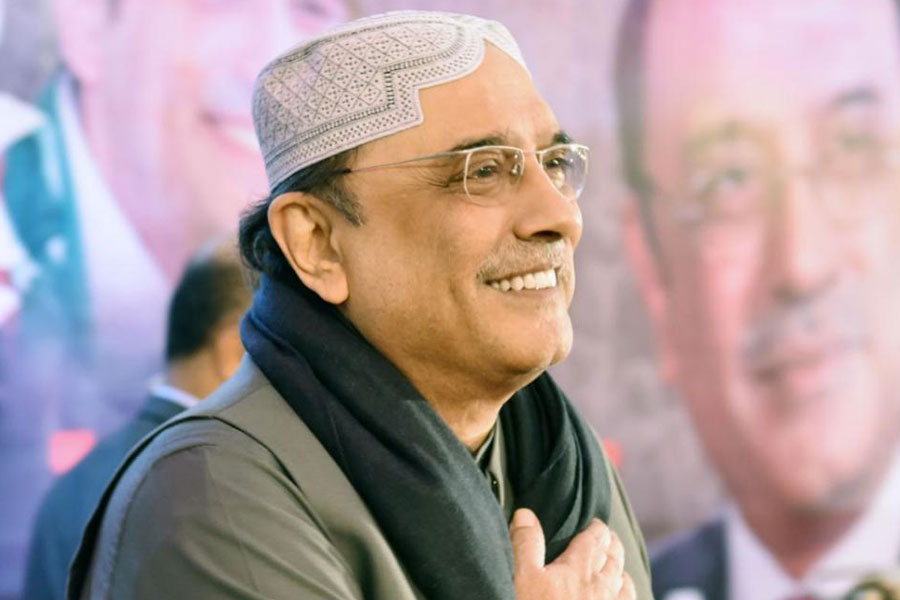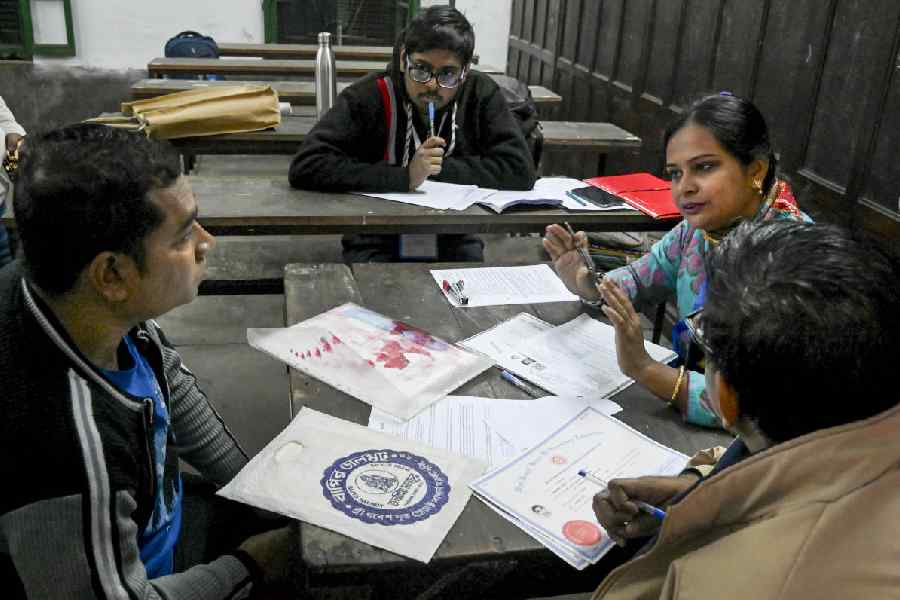
A sari design depicts the Suna Besa (golden attire) of the Trinity. Pictures by Ashwinee Pati
Bhubaneswar, Jan. 4: Sari, the fabric that transforms the personality of a woman, is now a canvas for showcasing Odisha's cultural traditions, religious rituals, natural beauty and tribal art.
Bankim Kumar Mishra, a cost-accountant-turned design consultant to the Odisha government and many organisations of the United Nations, has experimented with sari designs in a unique way.
The designs reflect Odia festivals such as Raja and Suna Besha (golden attire) of the holy trinity in Puri. The Raja festival comes alive in Mishra's creations on Bomkai saris exclusive to the Sonepur and Boudh belt of Odisha.
'The design of these saris incorporates elements such as girls sitting on swings, paddy plants and typical Odia delicacies associated with the Raja festival,' said Mishra, who has also used rudrakshya beads and fish as motifs.
In another Bomkai creation of his named 'Konark' there is a beautiful representation of dancing damsels and the famous wheel that is synonymous with the Sun temple.
'We focus on perfect borders and the distinct colours in our saris exclusively designed under a concept called exploring Odisha through handloom,'' he said.
Saroj Meher, a traditional weaver working in Mishra's team, said: 'Our earlier patterns were old and repetitive, but with the introduction of the new and innovative designs the product quality has gone up. We are happy to be part of this change.'
Asked how he conceptualised the designs, Mishra said: 'I had a stint as consultant in the Central Silk Board in Assam and was also involved in UNDP projects on weavers. Two years ago panchayati raj department of the state government started sponsoring a project at the common facility centre for weavers to develop the prototypes of the designs and they were later replicated by the weavers.''
In 2012, the use of the designs by weavers started in Sonepur and Boudh and last year it started in Badamba and Narasinghpur areas, which are traditionally known as weaving belts.
Apart from creating designs for saris there is also a plan to design stoles, wall hangings, wallets and home furnishings. At present, cotton saris are priced between Rs 2,550 and Rs 3,500 and silk ones between Rs 6,000 and Rs 20,000. A buyer can also ask for customised saris.
Mishra said: 'We have designed at least 150 saris themed on Lord Jagannath on the rath and another 150 on the Suna besa. Nearly 100 or more from each category are now with customers in US or Europe. We are propagating the Jagannath culture through our designs.''
His most recent designs include the one called Bihanga, meaning bird. It has a green background depicting birds sitting on trees. Tribal motifs, Boita bandana or the festival that celebrates ancient Kalingan maritime tradition and Pipili's famous appliqué work also find a place in his designs.
Mishra's creations are on display at a stall at Sisir Saras, the annual festival on handloom and handicrafts currently being held on the Exhibition Ground here. 'His designs will help popularise our culture among people,' said Sujata Rath, a visitor at the fair.

A sari design depicts the Suna Besa (golden attire) of the Trinity. Pictures by Ashwinee Pati











